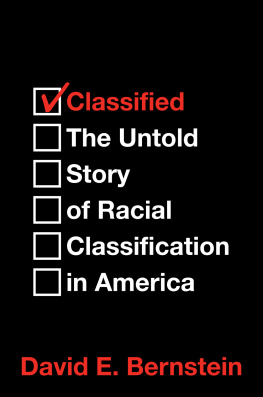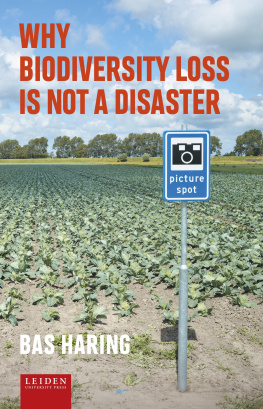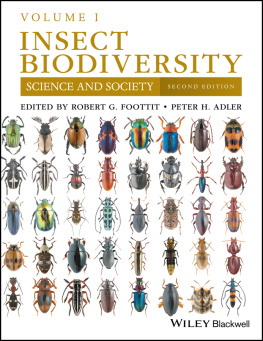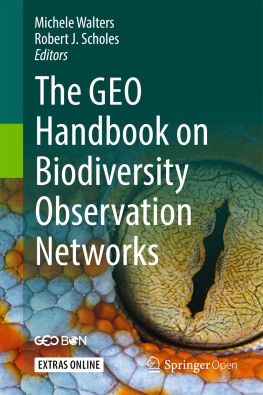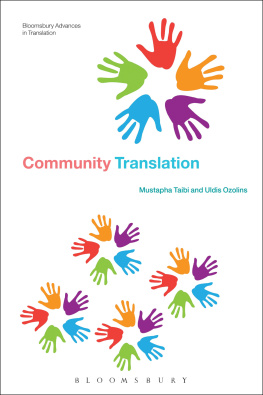Contents
List of Figures
List of Boxes
- Box 4.1
The Catalogue of Life has defined fourteen field groups to be the standard set of data for each species (or infraspecific taxa).
Guide
Pagebreaks of the print version

HISTORY AND FOUNDATIONS OF INFORMATION SCIENCE
Edited by Michael Buckland, Jonathan Furner, and Markus Krajewski
Human Information Retrieval by Julian Warner
Good Faith Collaboration: The Culture of Wikipedia by Joseph Michael Reagle Jr.
Paper Machines: About Cards & Catalogs, 15481929 by Markus Krajewski, translated by Peter Krapp
Information and Intrigue: From Index Cards to Dewey Decimals to Alger Hiss by Colin B. Burke
Indexing It All: The Subject in the Age of Documentation, Information, and Data by Ronald E. Day
Bibliometrics and Research Evaluation: The Good, the Bad, and the Ugly by Yves Gingras
Search Foundations: Toward a Science of Technology-Mediated Experience by Sachi Arafat and Elham Ashoori
The Information Manifold: Why Computers Cant Solve Algorithmic Bias and Fake News by Antonio Badia
Documentarity: Evidence, Ontology, and Inscription by Ronald E. Day
The Infographic: A History of Data Graphics in News and Communications by Murray Dick
The Typographic Medium by Kate Brideau
Power of Position: Classification and the Biodiversity Sciences by Robert D. Montoya
POWER OF POSITION
Classification and the Biodiversity Sciences
ROBERT D. MONTOYA
The MIT Press
Cambridge, Massachusetts
London, England
2022 Robert D. Montoya
This work is subject to a Creative Commons CC-BY-NC-4.0 license. Subject to such license, all rights are reserved.

This book is freely available in an open access edition thanks to TOME (Toward an Open Monograph Ecosystem)a collaboration of the Association of American Universities, the Association of University Presses, and the Association of Research Librariesand the generous support of Arcadia, a charitable fund of Lisbet Rausing and Peter Baldwin, and the UCLA Library. Learn more at the TOME website, available at: openmonographs.org.
The MIT Press would like to thank the anonymous peer reviewers who provided comments on drafts of this book. The generous work of academic experts is essential for establishing the authority and quality of our publications. We acknowledge with gratitude the contributions of these otherwise uncredited readers.
Library of Congress Cataloging-in-Publication Data
Names: Montoya, Robert D., author.
Title: Power of position : classification and the biodiversity sciences / Robert D. Montoya.
Description: Cambridge, Massachusetts : The MIT Press, [2022] | Series: History and foundations of information science | Includes bibliographical references and index.
Identifiers: LCCN 2021033972 | ISBN 9780262045278 (paperback)
Subjects: LCSH: BiologyClassification. | Life sciencesClassification. | Cladistic analysis.
Classification: LCC QH83 .M68 2022 | DDC 570.1/2dc23/eng/20211221
LC record available at https://lccn.loc.gov/2021033972
d_r0
Simply, to Baca
Contents
List of Figures
- Figure 0.1.
An analytic of classificatory power. - Figure 1.1.
Schematic of the Catalogue of Life management hierarchy interacting with the GSD internal classifications. Original image label: The Catalogue of Life retains the GSDs own classification below points of connection and uses the management classification above (Species 2000 2016a). CC-BY 4.0, Catalog of Life, used by permission. - Figure 2.1,
Shrink, by Tim Hawksinon (Rinder et al. 2005). Tim Hawkinson, courtesy Pace Gallery. Used by permission. - Figure 3.1.
Publishing model for the Catalogue of Life. The left flow chart indicates the entity types for the fixed (annual) version of the Catalogue. The right flow chart indicates the entities for the dynamic (monthly) version of the Catalogue. The dynamic version is not archived or saved for later use, so they are temporary exemplar documents (indicated by dotted lines). - Figure 3.2.
Catalogue of Life infrastructure layers (Species 2000 2015a). Nomenclatures exist at the bottom of the infrastructure layer and include all code-governed nomenclatural acts, including original name usages (in taxonomic literature) and objective synonyms, as well as other name forms. Regional hubs are regional checklists (RSDs) for a given geographic area. Global species databases (GSD) give taxa on a global scale. The Catalogue is then used as a taxonomic backbone for many other online systems. CC-BY 4.0, Catalog of Life, used by permission. - Figure 4.1.
(Left) Original East India Company type specimen cabinets. (Right) A type specimen folder from the East India Company cabinet. Royal Botanic Gardens, Kew. Photo by author. - Figure 4.2.
Catalogue of Life Plus Layer general schematic. Central names are curated to a gold standard. Linnaean names are names that are semantically meaningful and ready for ingest by the central repository. The outer ring consists of semantically incongruent forms that must be reconciled by volunteers before being ingested into the workflow. - Figure 5.1.
Example of monophyletic (outer box) and paraphyletic groups (inner box). Evolutionary taxonomists would define the class Reptilia as containing only lizards, snakes, and crocodiles, excluding Aves as part of this schematic; thus, it is paraphyletic. Cladists, on the other hand, would be unwilling to exclude Aves, because groups should include all the descents of a taxon, and thus a Reptilia group that includes Aves is monophyletic. Figure adapted from Marc Ereshefskys Poverty of the Linnaean Hierarchy: A Philosophical Study of Biological Taxonomy (2007, 54) and The Reptile Database (Uetz 2016). - Figure 5.2.
Catalogue of Life 2016 Annual Checklist taxonomic tree depicting the separate placement of the class Aves from class Reptilia in the tree structure (Species 2000 2020). CC-BY 4.0, Catalog of Life, used by permission. - Figure 6.1.
The extensive capacities of taxonomic instruments. - Figure 6.2.
From taxonomic databases to knowledge bases: understanding evolution. The goal in a system of this nature is to (a) take name data that is synthesized into validated taxon forms and (b) use these taxa as the building blocks for classifications that can then be used to articulate many possible phylogenetic hypotheses. - Figure 7.1.
Two different curated taxonomies displayed by the Encyclopedia of Life for the species Ursus arctos (Encyclopedia of Life 2017). CC-BY 4.0, Catalog of Life, used by permission. - Figure 7.2.
The (default) classification hierarchy for the species provided by the Catalogue of Life. (Bottom) The classification hierarchy provided by ITIS. CC-BY 4.0, Catalog of Life, used by permission. - Figure 7.3.
Catalogue of Life taxon record for Acidimicrobium ferrooxidans Clark and Norris, 1996. Note the Source database field, indicating the ITIS Global source database, the database version date (Sept 2015), the percentage of completeness of the species list this entry is embedded within, and finally, the confidence rating for the quality of the taxonomic checklist (level 5 value). CC-BY 4.0, Catalog of Life, used by permission.


